RSC主编推荐:材料领域精彩文章快览(免费阅读原文)
英国皇家化学会(RSC)是一个超过175年历史的面向全球化学家的非营利会员制机构,旗下拥有44种期刊,其中很多在化学领域有很高影响力。为了进一步帮助广大读者追踪科技前沿热点,X-MOL团队与英国皇家化学会合作,推出英国皇家化学会期刊主编推荐的精彩文章快览,本期文章属“材料领域”,英文点评来自英国皇家化学会期刊的主编。如果大家对我们的解读有更多的补充和点评,欢迎在文末写评论发表您的高见!
Chemical Science (IF: 9.556)
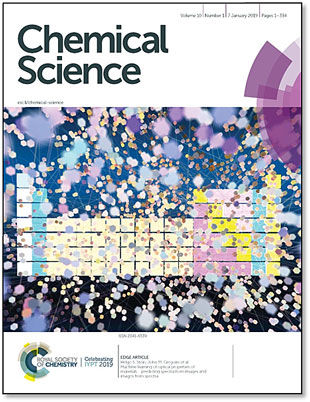
1. Synergistic catalysis on Fe–Nx sites and Fe nanoparticles for efficient synthesis of quinolines and quinazolinones via oxidative coupling of amines and aldehydes
Chem. Sci., 2019, Advance Article
DOI: 10.1039/C9SC04060A
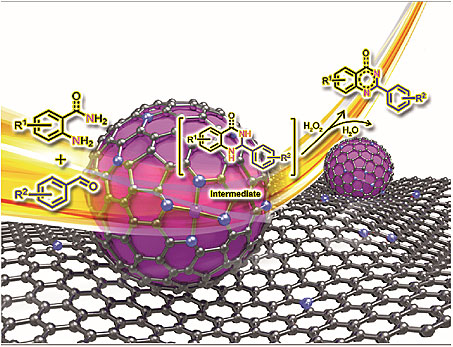
Researchers in China have developed an iron nanocomposite as a reusable heterogeneous catalyst for synthesis of quinolines and quinazolinones via oxidative coupling of amines and aldehydes using H2O2 as the oxidant in aqueous solution under mild conditions. The nanocomposite operates through a synergistic effect between metallic Fe–Fe3C nanoparticles and Fe–Nx sites on N-doped porous carbon.
Open Access(可免费阅读原文)
扫描或长按二维码,识别后直达原文页面,或点此查看原文

2. Two-dimensional magnetic metal–organic frameworks with the Shastry-Sutherland lattice
Chem. Sci., 2019, Advance Article
DOI: 10.1039/C9SC03816G
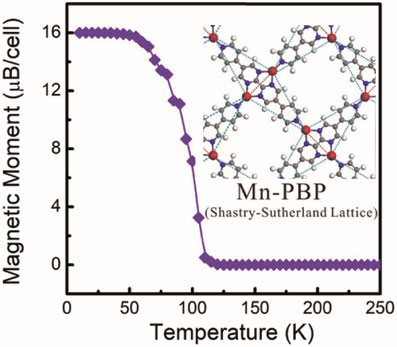
A multinational team of scientists from China, Germany and the USA have investigated a series of 2D MOFs with the Shastry-Sutherland lattice. The first-principles DFT calculation and Monte Carlo simulations show the first ferromagnetic 2D MOF with the Shastry-Sutherland lattice as well as finding that the materials are either stripe-order antiferromagnetic, magnetic-dimerized or nonmagnetic. The MOFs are semiconductors with band gaps ranging from 0.12 eV to 0.85 eV.
Open Access(可免费阅读原文)
扫描或长按二维码,识别后直达原文页面,或点此查看原文

Materials Horizons (IF: 14.356)
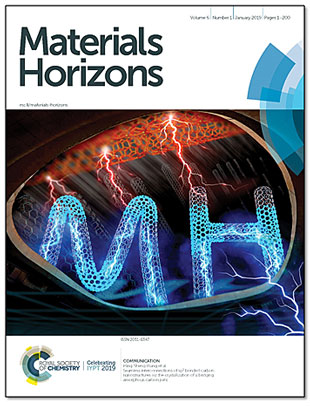
1. Self-doped p–n junctions in two-dimensional In2X3 van der Waals materials
Mater. Horiz., 2019, Advance Article
DOI: 10.1039/C9MH01109A
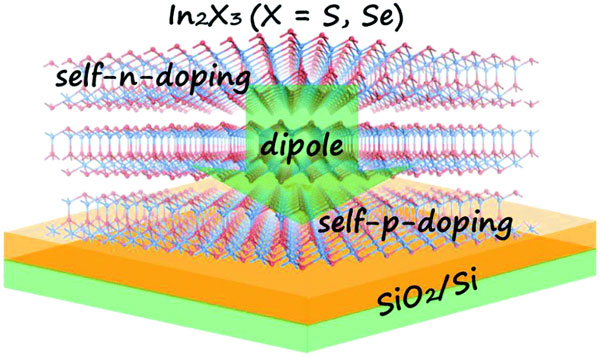
Challenges faced by atomically thin p–n junctions largely impede their development. On one hand, conventional processes to realize p- and n-type regions in three-dimensional crystals, such as implantation and doping, become invalid for two-dimensional crystals. On the other hand, the quality of the electrical contacts between two-dimensional semiconductors and metal electrodes is often masked by the high Schottky barrier at the hybrid interface. There is thus a pressing need to search for effective strategies to obtain p–n junctions and realize their low-resistive contacts with metal electrodes. We present here a novel strategy to realize p–n junctions in two-dimensional materials via self-doping. By stacking triple-layer In2X3 (X = S, Se), or sandwiching single-layer and double-layer In2S3 in-between graphene layers, atomically thin p–n junctions form naturally via self-doping without any additional modulation involved, which is attributed to the asymmetric structure-induced dipole field. More interestingly, the outmost layers in all these systems become metallic due to the self-doping, achieving natural low-resistance contact. These extraordinary features would largely simplify the device fabrication process and optimize the performances of two-dimensional electronic devices.
限时免费阅读原文,登录后可下载
扫描或长按二维码,识别后直达原文页面,或点此查看原文

2. Recent advances in manipulation of micro- and nano-objects with magnetic fields at small scales
Mater. Horiz., 2019, Advance Article
DOI: 10.1039/C9MH00714H
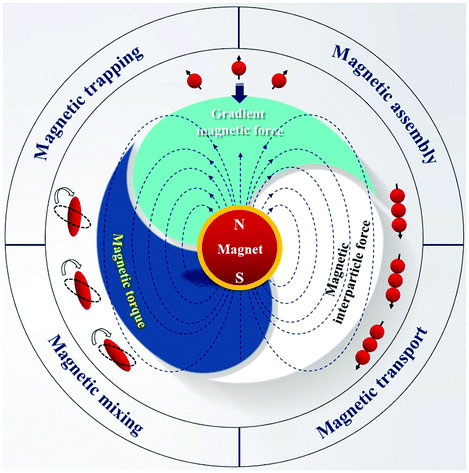
Manipulation of micro- and nano-objects has been widely studied in the past two decades due to its potential applications in various fields. In this review, we focus primarily on magnetic field-based manipulation techniques, which have shown to be extremely promising for the motion control of such objects at small scales. We start from the fundamental analysis of the magnetic forces and the torques acting on objects subjected to magnetic fields, and then summarize the most recent contributions in magnetic manipulation employed in four typical applications: micro-mixing, trapping, colloidal assembly, and object transport. Moreover, how magnetic fields can be applied to object manipulation and the physical principles underlying these manipulation processes are highlighted.
限时免费阅读原文,登录后可下载
扫描或长按二维码,识别后直达原文页面,或点此查看原文

3. A centimeter scale self-standing two-dimensional ultra-thin mesoporous platinum nanosheet
Mater. Horiz., 2019, Advance Article
DOI: 10.1039/C9MH01142K
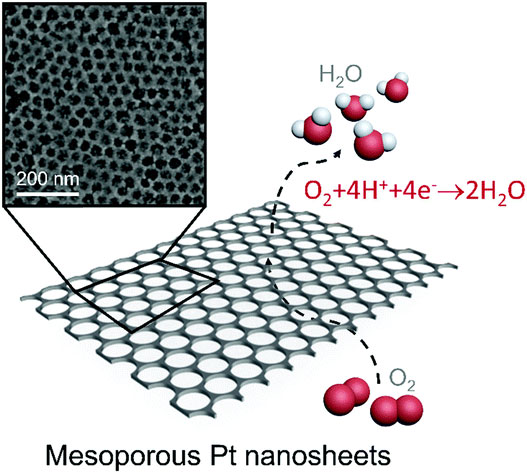
We report unprecedented synthesis of centimeter scale self-standing mesoporous Pt nanosheets due to the micelle self-assembly of poly(styrene-b-2-vinyl pyridine-b-ethylene oxide) (PS-P2VP-PEO) in a well-ordered and monolayered fashion over the entire surface of the substrate. Although mesoporous metallic materials have been extensively studied, we have failed to synthesize self-standing ultra-thin mesoporous metal films. This manuscript demonstrates the first example of a ultra-thin mesoporous metal film, which is a big breakthrough in the mesoporous community as well as materials science community. The surface coverage and the ordering of the micelles can be controlled by the micelle concentration in the starting precursor solution. A two-step reduction method using both DMAB vapor (for nucleation) and AA (for further growth) enables complete Pt deposition and determines the preparation of continuously ordered mesoporous nanosheets. Such 2D mesoporous metallic nanosheets with an ultra-thin thickness of ca. 15 nm can be used as building blocks to construct flexible self-standing electrodes containing regulated nanochannels and interconnected networks. Due to several unique porous structural features, including abundant active sites, high surface area, and long-range-ordered pores orthogonal and continuous throughout the thickness, such a material is expected to deliver high performance in a wide range of electrochemical applications.
限时免费阅读原文,登录后可下载
扫描或长按二维码,识别后直达原文页面,或点此查看原文

Biomaterials Science (IF: 5.251)
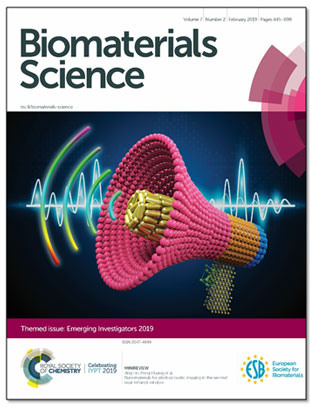
1. Melanin-loaded biocompatible photosensitive nanoparticles for controlled drug release in combined photothermal-chemotherapy guided by photoacoustic/ultrasound dual-modality imaging
Biomater. Sci., 2019, 7, 4060-4074
DOI: 10.1039/C9BM01052A
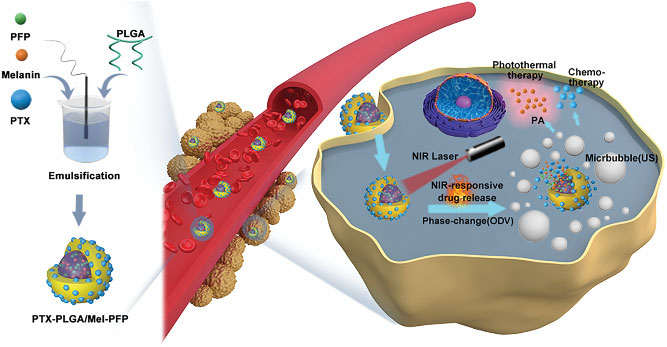
In this paper authors have developed a new type of multi-functional biocompatible nanoparticle, loaded with melanin, using multistep emulsification. The nanoparticles have combined photoacoustic and ultrasound dual modality imaging capabilities and the authors were able to trigger the release of paclitaxel using optical droplet vaporisation, there by controlling the drug release. The authors tested the nanoparticles both in vitro and in vivo and found the combined photothermal-chemotherapy effects were strongly synergistic, enhancing tumour ablation with no side effects.
限时免费阅读原文,登录后可下载
扫描或长按二维码,识别后直达原文页面,或点此查看原文

如果篇首注明了授权来源,任何转载需获得来源方的许可!如果篇首未特别注明出处,本文版权属于 X-MOL ( x-mol.com ), 未经许可,谢绝转载!































 京公网安备 11010802027423号
京公网安备 11010802027423号